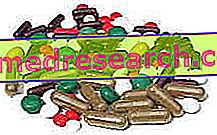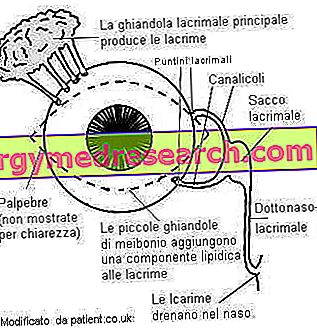The concept of food integration gives rise to wrong ideas and impressions in many newcomers. There are those who place an excess of confidence in these substances, those who confuse them with doping products and those who worry excessively about possible side effects.

Only the use of an adequate training program, associated with a correct diet, possibly assisted by a responsible use of food supplements, allows us to obtain appreciable and stable results over time.
Caffeine
Caffeine is a stimulant belonging to the purine alkaloid family. Present in numerous foods such as coffee, tea and cocoa, it is artificially added to some energy drinks and various cosmetic products.
Once taken, caffeine is rapidly absorbed from the intestine and is metabolized as quickly. This molecule can easily cross the blood-brain barrier and the placenta; it is also present in breast milk. For this reason, in pregnancy and during breastfeeding, the woman must limit the intake of coffee and other foods that contain it.
Caffeine positively influences athletic performance as it stimulates the release of catecholamines, promoting the following effects:
increase in the frequency of respiratory acts and therefore blood oxygenation;
increased blood flow, cardiac output and blood supply to the muscles;
stimulation on lipolysis, which favors the use of fats as energy fuel;
On the central nervous system, caffeine exerts analgesic effects, improves reflexes and the ability to concentrate, delaying the perception of fatigue.
Caffeine stimulates the metabolism and, thanks to its lipolytic properties, is often added to slimming or anti-cellulite products.
However, we must not forget that the regular intake of this substance causes addiction, with a consequent decrease in the effects sought. Moreover, excessive doses of caffeine have negative effects on the whole organism and are associated with the appearance of symptoms such as hyperexcitation, headache, tremors, insomnia, nervousness and tachycardia. Although significant individual differences exist in this regard, the first important side effects generally appear at doses of 500-1000 mg / day.
How much caffeine in:
a cup of coffee → 50-100 mg
a can of Coca Cola → 40 mg
a cup of tea → 50 mg
a pound of cocoa → 100 mg
Caffeine cannot be taken freely by athletes, since it is considered doping if present in urine in concentrations higher than 12 mcg / ml (threshold achievable by consuming more than 350-400 mg of caffeine in the 60 minutes preceding the competition).
Carnitine
This amino acid is synthesized in the liver and kidney from methionine and lysine. A significant proportion is also present in foods of animal origin (meat and dairy products). The metabolic role of carnitine is to promote the beta-oxidation of fatty acids for energy purposes, transporting them inside the mitochondria. Because of this function it is often used as a fat burning supplement.
Particularly in the sports world, carnitine is used for:
burn fat for energy and save glycogen;
limit lactate accumulation, as it promotes the conversion of lactic acid to acetyl CoA.
In both cases there would be an improvement in performance, since the onset of fatigue would be delayed. However, the efficacy of carnitine is doubtful since the various studies carried out to assess its energy potential have provided conflicting results.
Carnosine
It is a dipeptide (formed by alanine and histidine) present in the muscles and recently proposed as an anti-aging supplement, as it has an antioxidant and preventive action on the formation of AGE (final products of advanced glycosylation, excellent indicators of total mortality risk and cardiovascular).
For some years now, it has been proposed as a sports supplement as it buffers lactate, reduces fatigue, improves performance and shortens recovery times. However the particularly high production costs have slowed down its diffusion in the sports field.
Branched amino acids
During resistance exercise, a certain amount of muscle protein is demolished for energy purposes. In particular, this process mainly affects the branched amino acids, called, respectively, leucine, isoleucine and valine.
Their integration can serve not only to support exercise but also to save structural proteins, to stimulate the growth of muscle mass. Often the users of these products, deceived by misleading messages, forget that, unless the sport activity is particularly intense and prolonged, the use of protein supplements is not necessary. It should also be borne in mind that the increase in muscle mass induced by the consumption of proteins or amino acids has a limit and that an excessive intake of these substances leads to liver and kidney overload.
The branched amino acids are useful in endurance sports as they use the same carriers as tryptophan to pass the blood-brain barrier. It follows that if the blood levels of branched amino acids decrease, more tryptophan reaches the brain. Here, this amino acid is finally transformed into serotonin, a neurotransmitter involved in the onset of central fatigue. The integration with branched amino acids therefore reduces the synthesis of serotonin and with it the perception of fatigue during resistance exercise.
Creatine
Creatine derives in part from endogenous synthesis, carried out at the level of the liver, pancreas and kidney, starting from glycine, arginine and methionine. 95% of the creatine (Cr) present in the body is found in skeletal musculature and, here, about 60% of the substance is present in phosphorylated form, ie as phosphocreatine (PCr).
The phosphate group is combined with creatine from a highly energetic bond, which can easily be broken by ATP resynthesis. In short intense efforts phosphocreatine transfers its phosphate group to ADP, generating ATP according to a reversible reaction catalyzed by creatine kinase:
PCr + ADP <→ Cr + ATP
Creatinine is formed from the catabolism of creatine, which is then excreted in urine. The replacement of these losses is in part entrusted to the endogenous synthesis and partly to the dietary intake (meat). Both of these routes provide the body with about 1 g of creatine a day.
It should be kept in mind that excessive food intake influences the endogenous synthesis, reducing it, a bit like anabolic steroids do with testosterone.
According to various studies, oral creatine supplementation significantly increases levels of the substance in the muscle and improves performance in high intensity activities. Although there is a lot of confusion in this regard, creatine is not included in the list of doping substances. This does not mean that this supplement is free of undesirable effects, including weight gain (0.5-2.4 kg), probably due to intramuscular water retention, and the possible appearance of gastrointestinal disorders after the its ingestion. If taken at particularly high doses for long periods of time, creatine can compromise kidney function.


